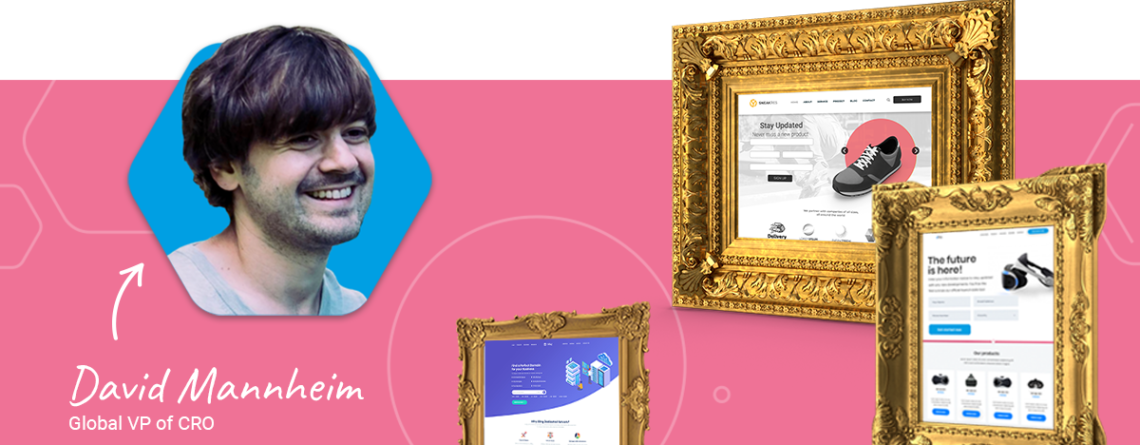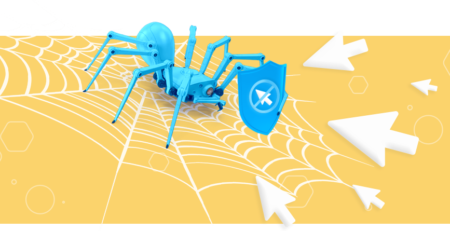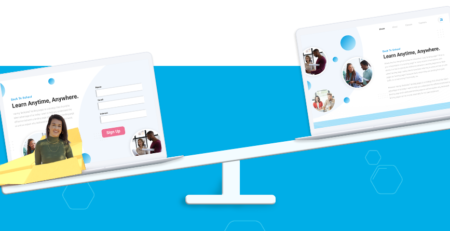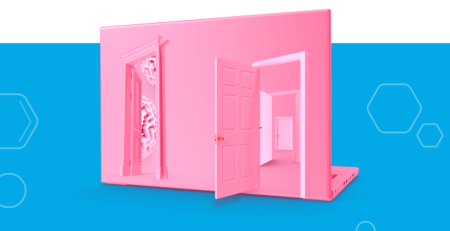Improving your creativity within CRO – why conflict, collaboration and your environment is key
Creativity.
The notion that some of us have it and some of us don’t is widely misunderstood. Just because you can’t draw doesn’t mean that you’re not creative. For starters, there are tactics to activate and heighten creativity in us all – some of which I’ll go through
I specifically wanted to challenge the notion of the current state of conversion rate optimisation within our industry; and that is that it is stagnant and lacks creativity. More so within the process, rather than the execution.
Why?
It’s my belief that we focus too much on the theory and the science of conversion rate optimisation. “This is wrong”. “This is right” “This test won” “That test lost”. Binary answers that pigeon-hole us into an overly analytical practice.
There’s justification for this.
Experimentation, a popularised method within the mindset of conversion rate optimisation, started as a scientific practice. In fact, it’s said to have started to identify scurvy within sailors by treating patients with both a control and a variation.
Bringing that practice over to a commercial environment like online retail or branding, arguably a more creative practice, creates conflict.
And here we are.
How can we reclaim that creativity within a deeply rooted scientific practice? Are we slaves to our own preconditions? Does experimentation really help us innovate?
Are we creating or copying?
The age old debate.
With what we produce as optimisers, do we create or steal? Copy is a nicer word to use isn’t it?
If we steal, we should steal from other industries. If the pharmaceutical industry first adopted experimentation, and continues to statistically test on outcomes of variables, shouldn’t we adopt more of their practices in our experimentation process? Think about the following processes that were, ahem, stolen:
- Toyota revolutionised the car industry when creating just-in-time (JIT) production. The style of replacing stock only for when it is needed was an idea derived from a Piggly Wiggly supermarket – ironically right next to the Ford plant
- The origin for GPS came from Sputnik. Where, accidentally, US scientists were able to determine the position of Sputnik from a single frequency. The department of defence asked if they could flip it – an unknown location on the ground from a known location above it – to triangulate where their own nuclear submarines were
- The inspiration behind a bagless vacuum cleaner in Dyson came from a sawmill “I noticed how the sawdust was being removed from the air by large industrial cyclones. I created a cardboard prototype and strapped it onto my machine. It didn’t look great, but it picked up more dust.” Fifteen years and 5,000 prototypes later…
Preconditioned thinking
“People have told us over and over again ,they don’t want to rent their music…they don’t want subscriptions” Steve Jobs in 2003.
Conversion rate optimisation is the process of improving a metric (usually conversion rate) often using insight. What happens when that insight prevents innovation?
Users don’t know what they don’t know. A phenomena known as functional fixedness, a cognitive bias that involves a tendency to see objects as only working in a particular way. A product detail page looks like a product detail page, because it is a product detail page. And thus, all product detail pages will look the same. How can we innovate when this cognitive bias exists?
If CRO is based on insight from our customers, what happens when that insight and success are inversely proportional? Jakob Nielsen says don’t listen to your users. There’s a famous example of Walmart listening to their customer survey and creating less clutter, only to lose $1.85bn in sales.
It’s not just our users that are preconditioned, either, but us; the optimisers.
Users are conditioned to how a product detail page looks, as are we conditioned to how it should look. In reality, therefore, we tend to create the same solutions to the same problems. I believe that, the more we homogenise solutions, the more users become desensitised to the effect of the ‘new’. Meaning the homogenisation of solutions will impact conversion less and less over time.
Solutions vs Executions
We’re creative beings. It’s what separates us from animals (although there’s evidence to suggest that some animals are, indeed, very creative. Or, that could just be our interpretation of it at least). We create. And when it comes to solving problems on websites, or creating features for users, or helping people reach the thing they want, we can’t help but create for them.
However, if all solutions are the ‘same’ to ‘existing problems’ how can we truly create?
It lies within the distinction between a solution and an execution.
A solution is something that’s devised to fix a problem. Experiment or not, we’re talking about optimisation, here. It could be conceptual or descriptive, but it doesn’t necessarily need to be specific. That’s where our innate creativity takes over. We require specificity.
That innateness, however, lies within an execution. This is different from a solution. A single solution can have hundreds of executions.
This is most apparent in how we prioritise experiments or ideas. At Brainlabs we use OKRs (objectives and key results) to prioritise top down, not bottom up. There are many reasons why, but perhaps the most poignant in this instance is that prioritising bottom-up leaves you arbitrarily scoring executions without taking solutions or problems into account.
Below is an example of two different executions attempting to solve the same problem; “Flannels customers who were not signed in to the site could not remember whether they had an account because of the low annual frequency of purchase”
The solution however, was to ask users whether they had an account, not how to ask whether they had an account. In the first execution we took the user’s email address first, and in the second, we took the email address on the next page (changing the journey depending on the answer).
In fact, this was the 4th execution that we tested after proving the solution itself, did indeed, fix the problem best – with the first version resulting in a +10.9% success rate to checkout on the control. However, the second version resulted in a +15.1% success rate to checkout (next page) from the control.
Same solution, different execution.
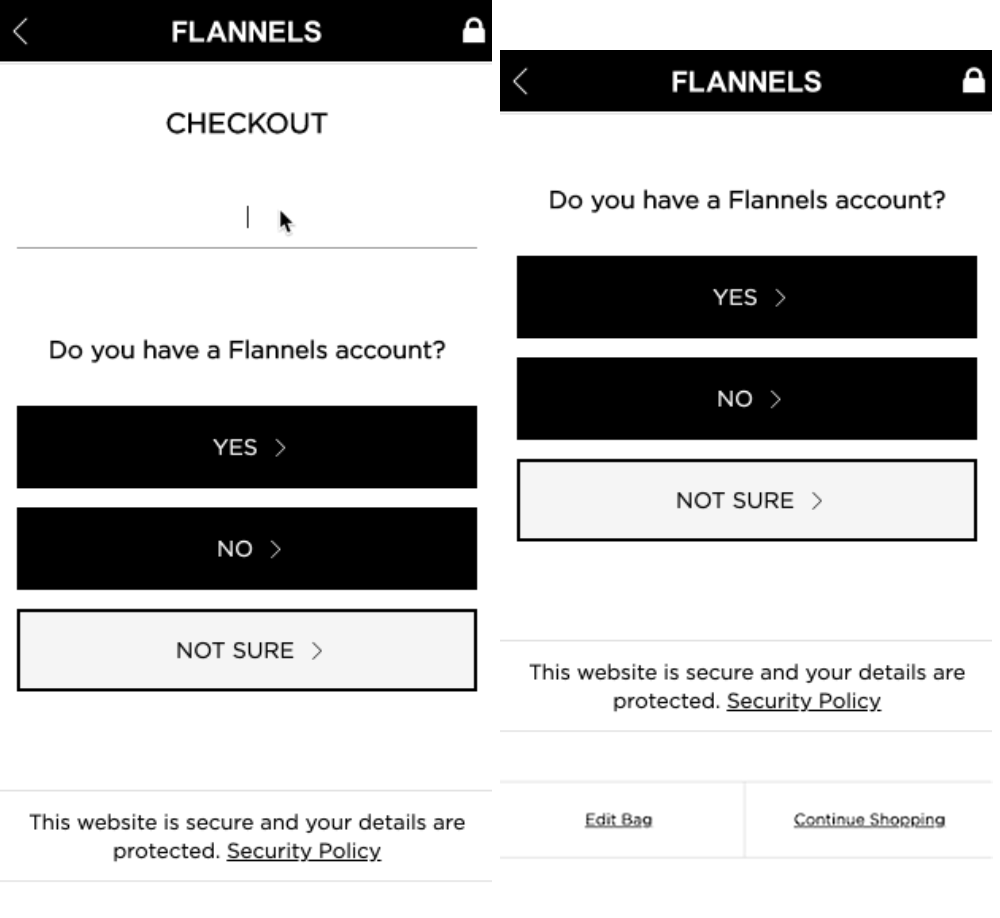
Being more creative
How can we be creative in our efforts to optimise websites? Be that the process or the output (the “solution design” as it were)
The answer, for us, comes in ways you might not expect. We can certainly copy other industries. Or use brilliant tools that facilitate our solution design process. But the answer actually boils down to more broader factors; collaboration, conflict, and environment.
- Collaboration
In the 1990s, psychologist Kevin Dunbar began conducting research on the researcher (Yes, you read that right.). Setting up cameras in several molecular biology labs, he recorded as much action as possible. He also conducted extensive interviews with the researchers. His most striking discovery had to do with the physical location where most of the innovative breakthroughs occurred. Turns out, ground zero of innovation was not the microscope, but the conference table where the researchers would gather and informally discuss their latest work.
At Brainlabs, focusing on multi-disciplinary teams that work together is the essence of conversion rate optimisation. An analyst, a UX researcher, a UX designer and an engineer all working together to solve problems is conversion rate optimisation. One unicorn cannot have all those skill sets equally, nor is CRO a discipline. Instead, think of it as a mindset. A culture, even. To achieve this, moving away from silo’d, centralised “optimisation” towards decentralised, agile iteration is the key to success within optimisation.
If your teams are too small to achieve that form of decentralisation, bringing in naive experts to your ideation sessions is recommended. Those who give a perspective outside your river of thinking. They can be customer service, your CEO, architects or, better yet, your users.
- Conflict
One of the 5 Dysfunctions of a Team highlighted by Patrick Lencioni is conflict. Aside from commitment and alignment, Lencioni talks about how healthy conflict can inspire new ideas and creativity, as well as improve problem-solving. Having that team around you that you trust in order to say “yes, and…” rather that “no , because” is a concept ex head of creativity and innovation at Disney, Duncan Wardle, talks about.
Trust is required first as a foundation, but the fear of conflict is the fear to speak up, contribute, bounce-off and, therefore, the fear of creativity. The most creative solutions don’t some from a single source, they come from multiple sources.
Giving your team permission to challenge is important. Overcoming imposter syndrome to allow that is, equally, challenging. When we collaborate, encouragement and permission are the two key factors that enable creative thinking in our experience. That can be from your team, the client, or your users.
- Environment
Needless to say, if you work in an environment that’s not creative, output can be limited. No one ever got that brilliant idea by sitting in front of a desk. Exercise, mediate, ensure your physical space is stimulating – they’re all great – but conditions are more than the physical.
“Time” is often cited as the biggest barrier to creativity. A trading mindset limits creativity, too. Whether it’s Dr Dre famously stating “you can’t put a time limit on creativity”, or the continued search for capitalistic growth and appeasement of shareholders; creativity can be inhibited based on the conditions that surround us.
Furthering that thought, trade demands results yesterday. CEOs are under pressure. eCommerce and product managers move away from risk and more toward comfort factors. The environment that we see in businesses is often a place where risk is avoided, and immediate action is demanded. “Walk fast”. “Make it happen”. “Ship it”. “Do it yesterday”. Factors, all of which inhibit creativity or, worse still, silo it.
Your environment is therefore your time. Taking time away to think rather than do is important. Having the permission and gift of time from your stakeholders is vital. Understanding their vision, to align your objectives with their leads to greater collaboration. How does your process of optimisation align with the vision of your CEO?
—
Creativity within optimisation is iterative; evolutionary, even. In fact, the concept of creativity is not know to come to us in eureka moments. Quite the opposite. Charles Darwin may have spoken of natural selection as a eureka moment. But, it was evidenced that he had the full theory for natural selection written down in his notebooks many months before the publication of the essay. The foundational mechanism of Natural Selection took many years of slogging it out over a desk before it bloomed into what was published in Origin.
We must challenge the status quo, and to do that, it requires conflict, collaboration and your environment to facilitate your optimisation process and solution ideation; not inhibit it.

